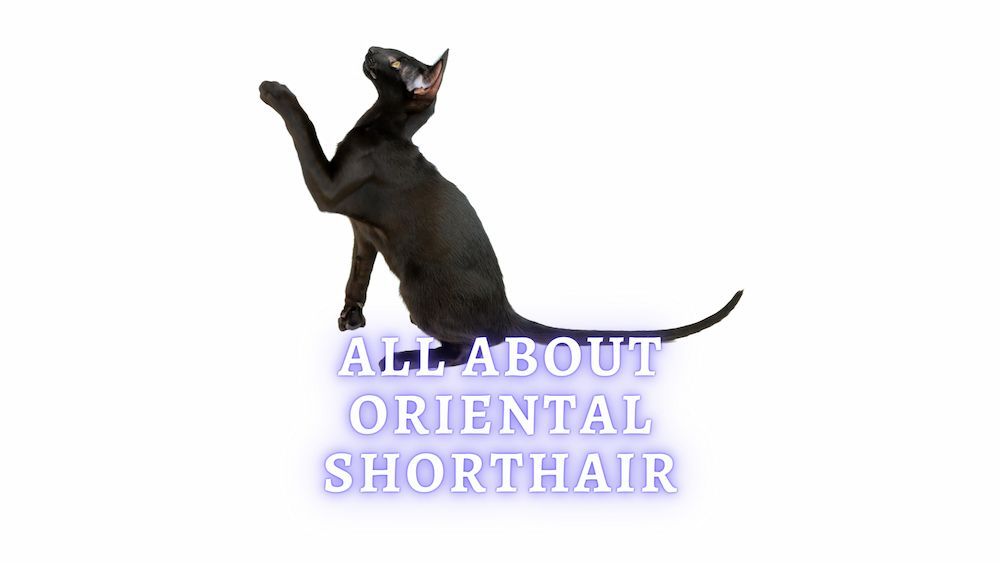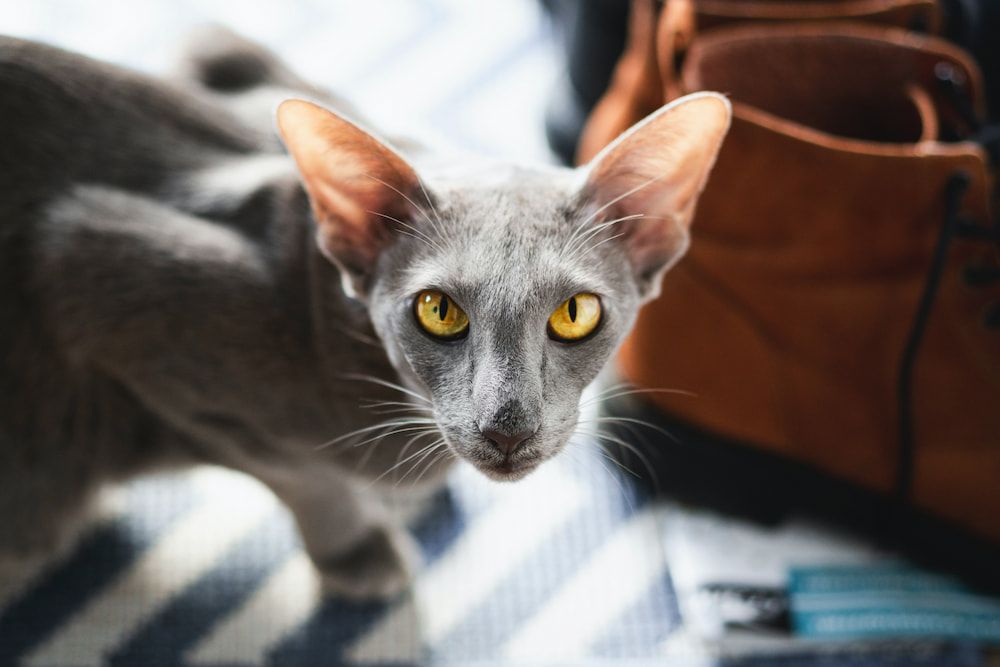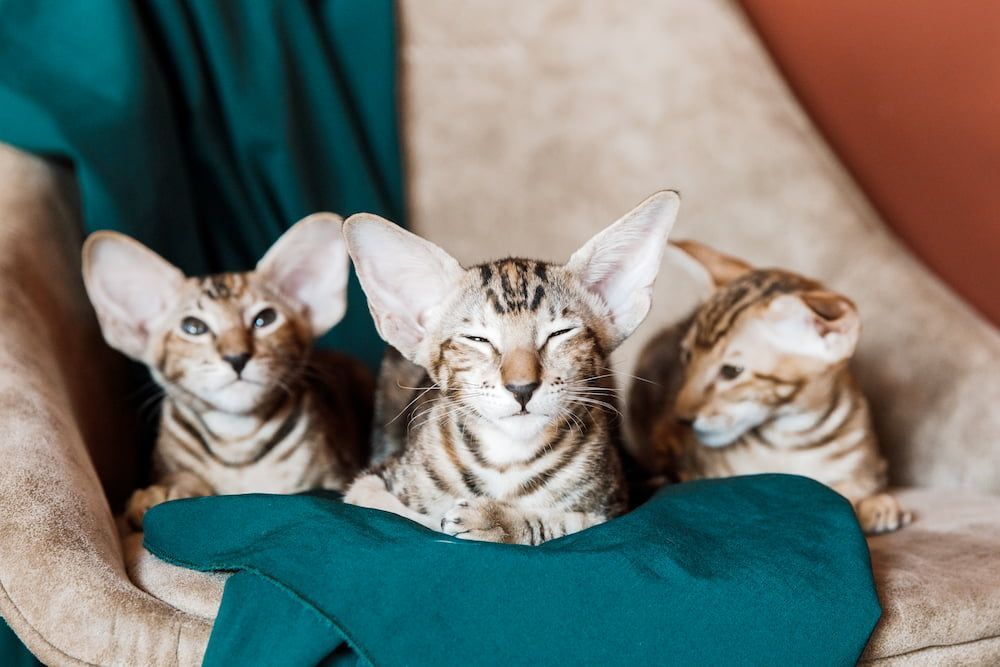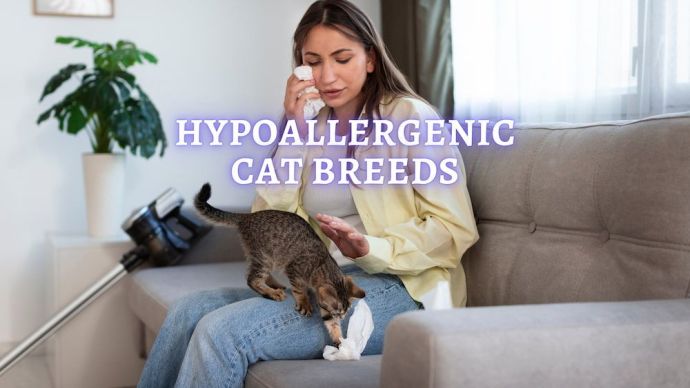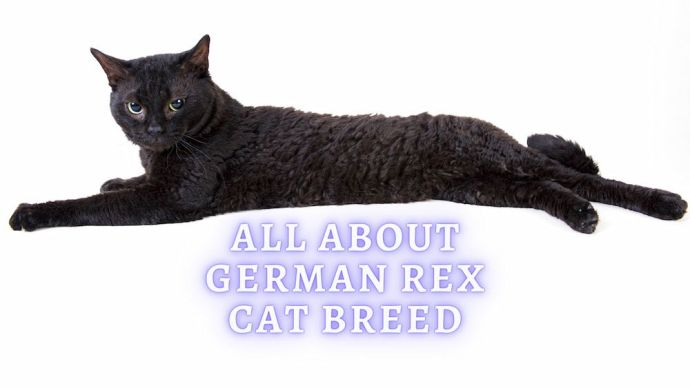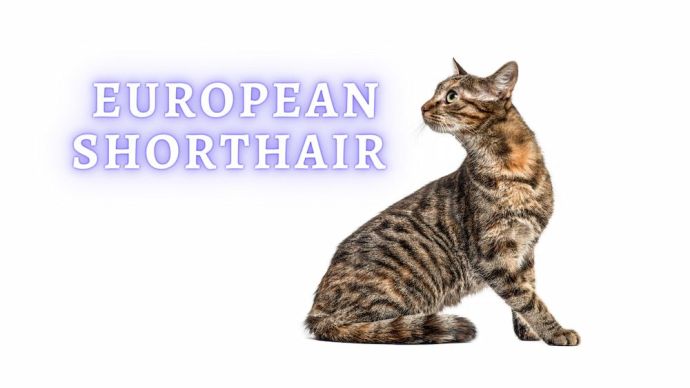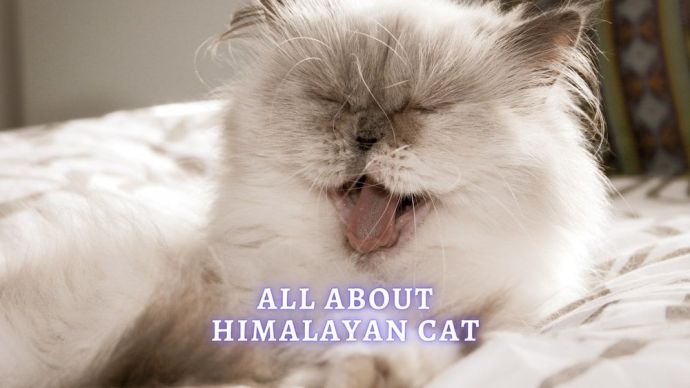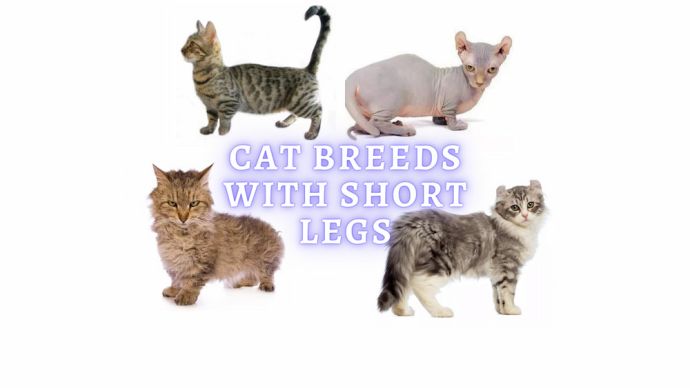Oriental Shorthair: Personality, Lifespan and Health
Written by:
Author: Vicki Smirnova
Vicki Smirnova is a professional writer and editor who adores animals and helps readers get along well with their pets. She has been working in digital media for more than 5 years and has great experience writing content about lifestyle, including pets. Vicki specializes in dog health and nutrition, cat feeding, dog training. She is an aquarium lover and is passionate to write about fish care at home. Also, Vicki headed several websites and worked as a news editor.
View all 245 articlesLearn about our editorial process and veterinary review board.
Viewed: 67
Updated on: 04/24/2023
If you want to get a cat that’s a true friend, then you should pay attention to the Oriental breed. It is a famous cat breed. They get along well with people and easily become family members.
Appearance
Oriental cats are medium in size. The structure of their body resembles the body of Siamese shorthairs cats. They have long, thin, whip-like tails and long, slender legs. The head is triangular and wedge-shaped with a straight profile, and the ears are large and wide apart. The oriental shorthair’s coat is very short and lies close to the body; the texture of the coat is pleasant and silky. The Oriental shorthair cat breed comes in various colors and spotting patterns.
| Weight | Up to 12 pounds |
| Height | Up to 18 inches |
| Colors and Patterns | White, black, gray, brown, orange ( over 600 variations) |
| Lifespan | Up to 15 years |
| Suitable for | Affectionate, playful, sociable and vocal |
According to the standard approved by the WCF (World Cat Federation) international cat association, the Oriental should have a flat forehead. The muzzle of pets of this breed should be narrow, the chin line should be clearly defined, and the neck elongated. A mandatory item is the wedge shape of the skull. The nose should be elongated, even, and located approximately in line with the chin. The eyes are almond-shaped; the distance between them visually equals the length of one of them. Regardless of coat color, all Orientals have a rich, emerald-shade eye. An exception to the general rule is white-haired ones, in which the color of the iris may be blue. In some Orientals, heterochromia occurs. The large ears are massive in relation to the head, continuing the wedge-shaped muzzle line. The most intensive growth of the auricles is observed in the first months of the animal’s life.
The Oriental’s body is slender, noticeably elongated in length, with a well-developed muscular corset. Oriental cats have incredibly long limbs, giving their silhouette a slight aristocratic grace. Their paws are oval and relatively small, and the tail is very long, with a sharp tip. The thickness of the tail is the same along the entire length. Oriental cats have almost no undercoat, so the coat gently outlines the body’s contours. It is an elegant cat.
The hair of these shorthaired cats is shiny and satin-type. [1]
By color, this is one of the few cat breeds that have the right to almost any shade of all existing ones. To systematize the colors and pattern combinations, felinological associations have identified their elemental types. In particular, modern Oriental cats can have coats of the following colors and patterns:
- Purple
- Blue
- Red
- Brown
- Beige
- Black
- Cream
- White
Of the tabby colors, merle, brindle, ticked and spotted varieties are preferred.
Serious defects that spoil the aristocratic appearance of Oriental cats include strabismus, any shade of the iris other than green, as well as protruding and clearly palpable cartilage in the sternum. As for exhibition events, tiny, too-thin cats with kinked tails are not allowed to enter. The list of defective pets includes animals with insufficiently strong hind legs, spots on the coat in the form of medallions, and cats that breathe through their mouths. In the long-haired variety of Orientals, a double coat with a well-developed undercoat may be a reason for disqualification.
History of the breed and association with Siamese cats
Genetically, Oriental cats are close to the Siamese cats, with whom they began to be exported from Thailand in the 19th century. British breeders did not consider them independent, so they ranked them as a tribe of the traditional Siamese breed with a modified type of color. At European shows, Oriental shorthairs were often disqualified for non-standard colors and for the emerald shade of the iris.
Until the beginning of the 20th century, Oriental shorthairs cats were bred only by cat fanciers association on breeding activities. The real crisis found the breed in 1923, after the American Siamese Cat Club strictly tabooed the breeding of any variety of Oriental, except blue-eyed ones with a Himalayan color.
For more than 30 years, the Oriental shorthairs were in limbo: they were excluded from the Siamese family but were not recognized as an independent breed. However, in the 60s, Orientals were recognized by British and American breeders, who were carried away by their extreme appearance. Initially, breeders planned to breed another variety of Siamese cats, which would have a uniform coat color without losing the grace of the lines. Orientals began to cross with Abyssinians and other short-haired pets to achieve this goal.
In 1977, the breed received its own appearance standard. In Britain, the breed was only recognized for a short 20 years. As a result, these pets only became an independent breed in 1997, after the official recognition of the GCCF.
Interesting facts about the oriental shorthairs
- The exotic appearance of the animal is its main distinction. An adult Oriental cat resembles an alien.
- Orientals’ favorite place is next to their pet parents. It’s a lap cat.
- Adults are very talkative and like to attract attention with persistent meowing.
- There are about 300 color options among cats of the Oriental shorthairs breed.
- Oriental shorthairs pets are quite friendly and will calmly share their neighborhood with other pets, including dogs.
- These most popular cat breeds are not intended for overly busy owners. Left alone, the Oriental will suffer from a lack of communication, which will negatively affect its nervous system.
READ MORE: Friendliest Cat Breeds
Personality
Oriental cats are famous for their fantastic temperament, of which the primary virtue is loyalty. These cats should not be given away or passed on as adults; otherwise, they will become bored and depressed. The Oriental cat is so faithful to its owner that it is ready to follow him/her everywhere. It perfectly tolerates traveling, and the main thing is that the owner is nearby.
Oriental cats are famous for their voice and love of communication. Moreover, they have a rather specific timbre and are ready to make a whole palette of sounds: from a drawn-out meow to snorting and purring.
| Playfulness | 5 out of 5 |
| Activity level | 5 out of 5 |
| Friendliness to other pets | 4 out of 5 |
| Friendliness to children | 4 out of 5 |
| Shedding | 4 out of 5 |
| Need for attention | 5 out of 5 |
| Affectionate towards its owner | 5 out of 5 |
| Intelligence | 5 out of 5 |
| Independence | 3 out of 5 |
Purebred Orientals are spirited and playful pets. Sofas for oriental cats are not a habitat but a convenient springboard from which it is so convenient to jump into the closet. With age, Orientals do not lose interest in games, so even older cats are happy to swat candy wrappers and paper balls across the floor. Another characteristic feature of the breed is curiosity. The contents of any closed container are subject to a thorough inspection, and slammed doors to another room are regarded as a military secret that must be disclosed.
Oriental longhair or shorthair cats are very dependent on human attention and endure loneliness with difficulty. Most oriental shorthair cats have bright personalities and, according to experts, should not be the only pet in the house because the presence of other animals in the room helps them to less painfully endure separation from their owner.
Activity
These cats are very active and ready to be in the spotlight, play, caress and even perform tricks – they do not like to be alone. These animals are brilliant, so they can be taught specific commands with proper training.
They are easy to teach to bring objects and perform simple commands. As for the basics of etiquette, the cat will have to be vaccinated because, despite a fairly high level of intelligence, Oriental cats are capable of minor dirty tricks. For example, they love to swing on curtains and dig in flower pots.
An oriental shorthair cat can easily guess its own mistakes, relying only on the intonation of your voice, so use this quality to the fullest. Be strict with the mischievous mustachioed walking around the table – you can be sure that the pet will intuitively understand what its owner wants. A common mistake that can negate the results of all your efforts is periodic exceptions to established rules.
Health and Care
Oriental cats are quite easy to care for and maintain. They should be combed with a massage brush once every 7-10 days (animals with long hair more often – twice a week). Bathing is highly discouraged as they do not really like this activity.
You should take care of the eyes of cats daily – remove discharge from the lacrimal ducts with a cotton swab or damp, soft cloth. When cleaning the ears, you need to be especially careful because the ears of the Orientals are delicate and the skin is easily damaged. It is recommended to moisten a cotton swab in oil; also check the softness and fullness of the cotton so that the sharp end does not scratch the skin. Only the visible part of the ear should be cleaned.
Teeth should be brushed regularly, as Orientals are prone to oral diseases. You should also give your pet special treats to chew on. Nails should be cut every month, using nail cutters or tweezers. No more than 2 mm of the claw should be removed at a time, while it is better to cut off less so as not to touch the vessel.
RELATED: How to restrain cats to clip their nails safely
Show cats require more intensive care and, most likely, will often have to use the services of professionals. If you are not going to breed your cat, or take it to exhibitions, limit yourself to basic care rules. We must not forget about regular visits to the veterinarian so that the pet is always healthy.
Oriental cats are predisposed to a number of diseases:
- Liver amyloidosis.
- Cardiomyopathy.
- Gingivitis (to avoid this disease, cleaning the pet’s oral cavity regularly) is necessary.
- Flat chest syndrome – only in kittens (if the deformity is mild, then over time the chest straightens).
Feeding the pet with specialized food is necessary to avoid problems with the digestive organs. It is also necessary to stop any drafts in the apartment, as Orientals easily get cold due to lack of an undercoat.
Orientals tend to gain weight; nutrition must be carefully controlled for this breed. Long, thin legs are not designed to support an overweight body.
Shelves and a cat tree should be provided in the house. Orientals love and will always appreciate having toys at home. An oriental shorthair cat can live up to 17 years with proper care and maintenance.
Price
The price for an oriental shorthair kitten starts from $600 and goes up to $3,000, depending on the pedigree. Each cattery individually sets the cost of the kittens. Of course, if you wish, you can find a non-purebred cat for very little money (but at the same time, no one can guarantee the purity of the breed).
Breeders
It is not recommended to purchase an Oriental cat not in official catteries. Firstly, the animal can be sick, and secondly, due to the popularity of the breed, many unscrupulous sellers have appeared who pass off completely different animals as Orientals, which, naturally, will not have the devotion and sociability of Orientals, even while maintaining external data.
Adoption
The Oriental shorthair breed quickly gained popularity in the United States. Because of this popularity, many Oriental shorthair breeders, as well as shelters, have appeared.
Some resources to check as you search for an oriental shorthair cat include:
- CFA Breeder Directory
- TICA Breeder Directory
- Oriental Cat Association Rescue
Conclusion
The Oriental cat is distinguished by a flexible, muscular, long and slender body. The coat of these short-haired cats is very silky, shiny and close to the body. These pets are known for their amazing character. Animals of this breed do not require much care; however, these cats love attention, and with proper education.
Pros
Cons
- Friendly and playful
- Devoted
- Beautiful coat colors
- Good health
- Prone to vocalization
- Often climb high furniture
- Require a lot of attention
FAQ
Do Oriental shorthair cats make good pets?
Oriental shorthair cats are sociable, intelligent, curious and able to draw attention to themselves. With pleasure, they “talk” with the owner and accompany him/her in household chores. These animals make excellent pets and companions.
How much is an Oriental shorthair cat?
The price for a kitten of this breed starts from $600 and goes up to $3,000, depending on the pedigree. Each cattery individually sets the cost of the animal.
Are Oriental shorthair or oriental longhair cats rare?
Though their looks are unusual and many might not be familiar with these felines, Oriental shorthairs aren’t as rare as exotic cat breeds, like the Khao Manee or American Bobtail.
READ MORE: Cat Breeds with Very Short or No Tails
Article Sources:
- “Oriental Breed Standard.” The Cat Fanciers’ Association, Inc, cfa.org/oriental/oriental-breed-standard/.
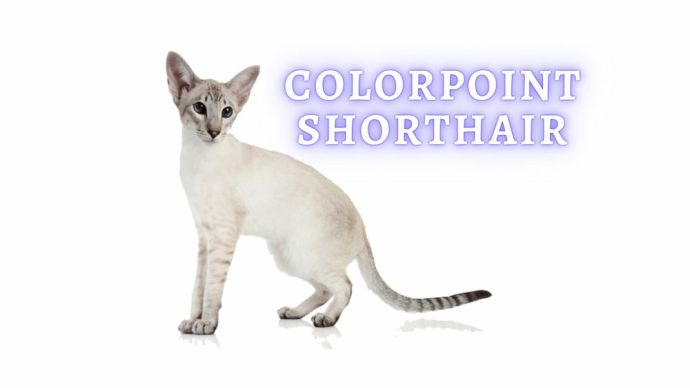 Cat Breeds Colorpoint Shorthair: Colorpoint Shorthair Cat Breed History, Temperament and Personality
Cat Breeds Colorpoint Shorthair: Colorpoint Shorthair Cat Breed History, Temperament and Personality - 198
- 0
 Cat Care Why Does My Cat Attack My Legs? 10 Reasons Why and What To Do About It (Vet-Approved Advice)
Cat Care Why Does My Cat Attack My Legs? 10 Reasons Why and What To Do About It (Vet-Approved Advice) - 45094
- 21
 Cat Veterinary Tips Cat Stomach Gurgling: Vet Advice on Why is Your Cat Stomach Gurgling?
Cat Veterinary Tips Cat Stomach Gurgling: Vet Advice on Why is Your Cat Stomach Gurgling? - 33742
- 4
 Cat Veterinary Tips My Cat Lost its Voice: Can Cats get Laryngitis? (Vet Advice)
Cat Veterinary Tips My Cat Lost its Voice: Can Cats get Laryngitis? (Vet Advice) - 22891
- 13









